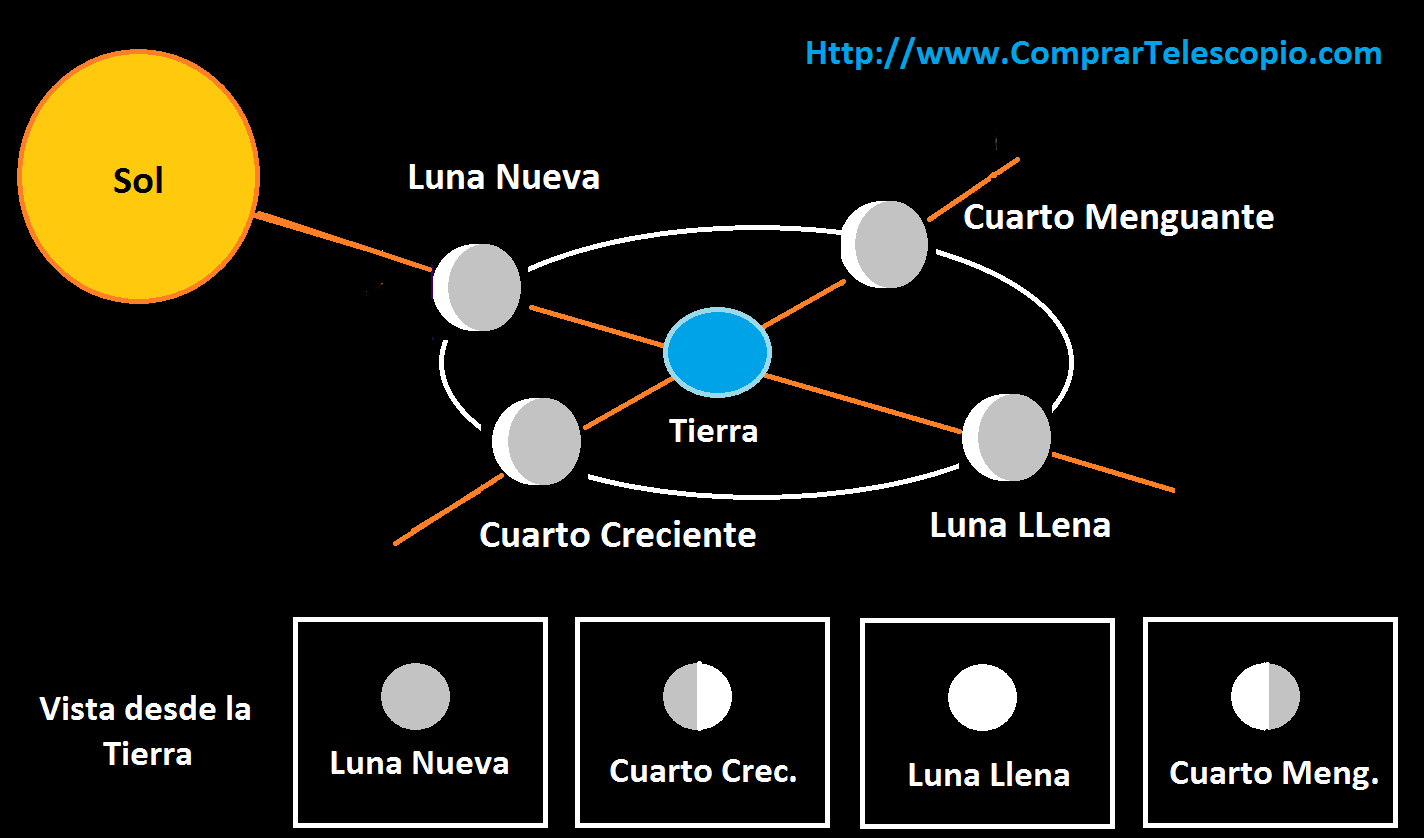Unlocking the Secrets of the Moon's Four Phases
Ever gaze up at the night sky and wonder about that luminous orb hanging there? It changes shape, sometimes a sliver, sometimes a perfect circle. It’s the moon, of course, and its transformations throughout the month are more than just visually stunning. These shifts, known as the four lunar phases, have captivated humans for centuries, inspiring myths, guiding calendars, and even influencing our daily lives. Prepare to delve into the captivating world of the lunar cycle!
The moon's phases, that recurring cycle of waxing and waning, are a fundamental aspect of our celestial neighborhood. But why does the moon seem to change shape? It's not actually altering its form, but rather the amount of sunlight we can see reflecting off its surface. As the moon orbits Earth, the angle between the sun, Earth, and the moon changes, resulting in the different phases we observe.
The lunar cycle begins with the new moon, a time of darkness when the moon is positioned between the Earth and the sun. We can’t see it because the sunlit side faces away from us. Then, as the moon continues its journey, a sliver of light appears, the waxing crescent moon. Gradually, it grows larger, becoming the first quarter, then waxing gibbous, until it reaches its full, illuminated glory - the full moon. This entire process of growing illumination is called waxing.
After the full moon, the illuminated part starts to shrink, waning. We see the waning gibbous, then the third quarter, followed by the waning crescent, eventually returning to the new moon, restarting the cycle. This entire cycle takes approximately 29.5 days, a lunar month. The moon's phases have been vital to timekeeping throughout history, with many cultures basing their calendars on the lunar cycle.
The moon’s influence isn't just about marking time. Its gravitational pull is the primary driver of Earth’s tides, creating the rhythmic ebb and flow of ocean waters. This tidal influence has profound impacts on marine ecosystems, coastal communities, and navigation. Beyond the tides, the moon's phases have been linked to agricultural practices, with farmers traditionally planting and harvesting according to the lunar cycle. Some even believe the moon phases impact human behavior and mood, although scientific evidence for this remains inconclusive.
Throughout history, different cultures have woven intricate myths and legends around the moon and its phases. From stories of lunar deities to tales of werewolves and other mythical creatures, the moon has played a significant role in shaping human imagination and belief systems. Its cyclical nature has also been associated with themes of birth, death, and rebirth.
Understanding the four main lunar phases – new moon, first quarter, full moon, and third quarter – is crucial for appreciating the moon's influence on our planet and our lives. Observing the moon's phases can be a rewarding experience, connecting us to the rhythms of nature and the vastness of the cosmos.
One benefit of understanding the lunar cycle is its potential for personal reflection and growth. Many people find that aligning their intentions and actions with the different moon phases can provide a framework for setting goals and cultivating positive habits. For example, the new moon is often seen as a time for new beginnings, while the full moon is a time for release and letting go.
Another benefit is a deeper appreciation for the natural world. By observing the moon’s phases and their connection to tides and other natural phenomena, we gain a greater understanding of the interconnectedness of our planet’s ecosystems.
A simple way to follow the lunar cycle is by using a lunar calendar or a moon phase app. These tools can help you track the current phase and plan activities accordingly.
Advantages and Disadvantages of Following the Lunar Cycle
| Advantages | Disadvantages |
|---|---|
| Connection to nature | Lack of scientific evidence for certain claims |
| Framework for personal reflection | Potential for misinterpretation of lunar influences |
FAQs:
What causes the moon phases? The changing angles between the sun, Earth, and moon as the moon orbits Earth.
How long is a lunar cycle? Approximately 29.5 days.
What is a new moon? When the moon is between the Earth and the sun, and we can’t see it.
What is a full moon? When the entire face of the moon is illuminated by the sun.
Do the moon phases affect human behavior? There is no definitive scientific evidence to support this claim.
How do tides work? The moon’s gravitational pull causes the ocean waters to bulge, creating high and low tides.
Why is the moon important? It influences tides, provides a natural timekeeping system, and has inspired human culture and mythology.
How can I learn more about the moon phases? Use a lunar calendar, moon phase app, or explore online resources.
In conclusion, the four phases of the moon are a captivating celestial phenomenon with a rich history of human fascination and practical application. From marking time to influencing tides and inspiring myths, the lunar cycle is an integral part of our planet's natural rhythms. By understanding the phases of the moon, we gain a deeper appreciation for the interconnectedness of the cosmos and our place within it. Whether you’re a seasoned astronomer, a curious observer, or simply someone who enjoys the beauty of a moonlit night, exploring the lunar cycle is a journey of discovery that connects us to the wonders of the universe. Take the time to observe the moon’s changes, learn more about its influence, and discover the secrets it holds. You might be surprised at what you find.
Kids data privacy a world of connection a world of responsibility
Unlocking math mysteries your guide to conversion anchor charts for 4th grade
Damp carpet mystery unraveling the causes and solutions














